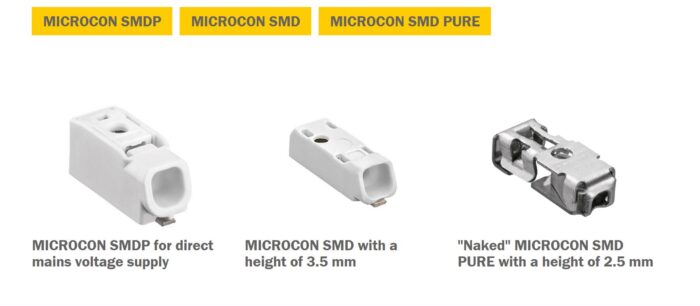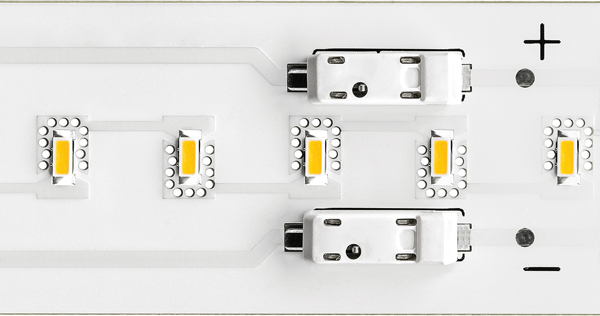Electro Terminal : 3 Reasons to opt for SMT
Partner Beltrade Electro Terminal : 3 Reasons to opt for SMT
Electro Terminal : 3 Reasons to opt for SMT
What exactly is surface-mounted technology (SMT)?
In state-of-the-art SMT, components are placed directly onto the printed circuit board (PCB) to create a so-called surface-mounted device (SMD).
And what is through-hole technology (THT)?
In THT, components are inserted through holes drilled into in the PCB.
We have analyzed the differences of the two technologies in detail. Here are the results in a nutshell.
Efficient
Time & resources are valuable.
In surface-mounted technology, you can mount SMD components on the top and bottom side of the PCB. There’s no need to drill holes into the printed circuit board. This is a big advantage when it comes to flexibility and production times.
Small but effective
Flat & easy to use
SMT components have extremely low dimensions compared to through-hole devices. The MICROCON SMD, for example, is only 3.5 mm high.
Most through-hole mounted components need to be installed manually. Surface-mounted devices, e. g. MICROCON SMD connectors, are delivered in tape-and-reel packaging and can be automatically placed and wired by means of a pick & place machine.
Usually, SMD connectors are not suitable for high power applications. The MICROCON SMDP (“P” = power), however, can be used for direct mains voltage supply to electronic PCB.
Safe
Process safety
The mechanical performance in SMT is better, especially under vibration conditions.
Quality control
MICROCON SMD connectors are IECE, OVE and UL approved. They are also tested according to the standard norm for connectors. Our manufacturing processes are regularly examined by independent testing institutes.
SMD made by Electro Terminal
We offer three different models, ranging from power supply connectors to simple PCB connectors with or without housing:

